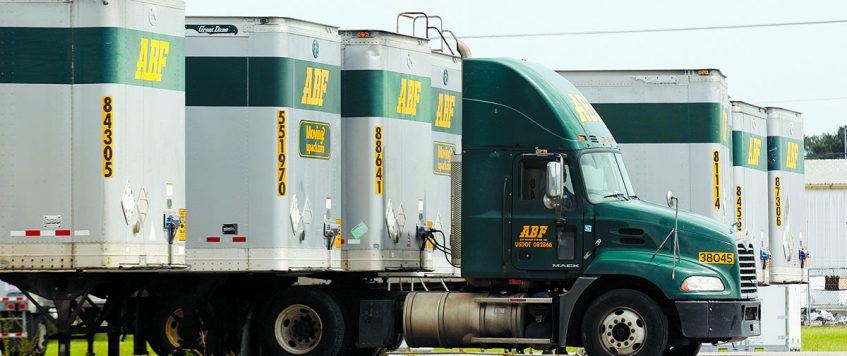-
29
Jun
LTL Outlook Strong Despite Economic Fears
Less-than-truckload (LTL) carriers expect their rates to rise and remain elevated even if the US economy falls into a recession, according to speakers and executives at the SMC3 Connections Conference.
Demand for LTL freight services remains strong, despite concerns about slowing expansion of US gross domestic product, LTL and third-party logistics (3PL) officials said Monday at the SMC3 event in San Diego. On top of that, LTL capacity remains tight, despite the gradual expansion of terminal networks.
Most significantly, the pricing discipline that has characterized the LTL market since recovery from the 2008-2009 recession remains in place. And the LTL market, largely contract-driven, doesn’t feel the type of transactional price pressure applied to truckload agreements by the spot market.
The producer price index for long-distance LTL trucking rose 3.8 percent in May from April and was up 34.1 percent year over year, an indication of how much LTL costs have climbed. The PPI data reflects carrier revenue from the “selling price” including base rates and fuel surcharges.
LTL carriers, from FedEx Freight at the top of the market on down, remain focused on “revenue quality.” That means they’re choosing freight based on its profitability and impact on their margins. And there is still enough LTL freight demand to keep pricing elevated as they reject less-profitable freight.
“I think we should be thoughtful and careful not to panic over the next week or month or three months, to fear the world’s going to go under and the sky is going to fall, because it’s not,” Schmitt said. “LTL is going to be for the next several years the most valuable set of letters in US transportation.”
International additions
LTL increasingly seems at the crossroads of parcel, truckload, and international cargo. Congestion at ports and on intermodal rail is pushing more deconsolidated container freight to truck. That’s leading LTL carriers to position more terminals closer to US seaports, a trend that is expected to continue.
“You’ve got more imports coming, regardless of where the economy is right now,” Jason Bergman, chief commercial officer of multiregional LTL carrier Yellow, said during a panel discussion. “That’s going to impact the volume of shipments moving through LTL networks.”
“We’re seeing a lot more requests to come in with drayage solutions,” Bergman added. “And people are diverting shipments from one warehouse to another to get it to its destination faster.” The need to deliver smaller palletized shipments rapidly over shorter lengths of haul benefits LTL, he said.
In the past, deconsolidated container freight didn’t touch an LTL network until it was many miles inland. That’s changing, said Rob Estes, president and CEO of Estes Express. “Port cities, especially on the East Coast, used to be more consumer oriented, without a lot of manufacturing,” Estes said.
“Savannah, Charleston, and Elizabeth, New Jersey, are mega-outbound ports for us now,” he told the panel. Estes in June opened a 90-door terminal near the port of Savannah to capture a greater share of international freight as it moves off ships and into inland distribution networks.
“In Savannah we feel we can balance the state of Florida, with empties coming out of Florida into Savannah, and moving freight we load there to the rest of the Southeast and Midwest,” Estes said. Trucks sent fully loaded to Florida, a consumer market, often come back empty or partly empty.
“We used to price freight going to a port as a headhaul and now that’s been reversed,” he said.
Quality, not quantity
Another trend that’s been reversed is the long-time prevalence of discounting in LTL pricing. Before the 2008-2009 recession, LTL carriers largely focused on revenue growth, often discounting prices off base rates to gain more freight. That led to several years of losses for several large carriers.
Since 2008-2009, LTL carriers have developed more disciplined pricing as they generally put growth in profits ahead of revenue growth. That discipline hasn’t wavered during the volatile ups and downs of the COVID-19 pandemic and 2020 recession, and carriers aren’t breaking ranks yet in 2022.
“The LTL business has certainly evolved from where it was a number of years ago,” Mike Lenz, executive vice president and CFO of FedEx told Wall Street analysts during an earnings call last week.
In its quarter ended May 31, FedEx Freight increased its revenue per hundredweight, a measure of profitability based partly on pricing, 30.2 percent year over year, while revenue per shipment rose 28 percent. Volumes dropped 3.8 percent. FedEx Freight is making more money while hauling less.
The company’s executives believe they are well poised to weather any decline in retail or industrial demand that may emerge this year. “When demand is strong, there is not the degree of capacity added which then is excess capacity when you go through a little more cyclical change,” Lenz said.
“The message for the shipper is that whatever you may read about demand softening or the economy going into recession, that by itself doesn’t mean your LTL carrier’s rates are going to drop,” said Satish Jindel, president of transportation research firm SJ Consulting Group.
By: William B Cassidy / JOC

